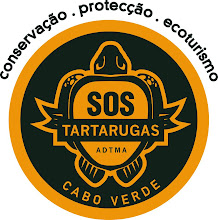There is always a period during the season where hunters are out in force and the Rangers are on red alert. This year is no different.
Over the course of the last six days Rangers have saved three turtles and seen two dead turtles.
The first dead turtle was found at a beach between Kite Beach and Serra Negra, an area that does not get patrolled regularly. The police are fairly certain that they have the culprits since they left behind blood stained clothes which links them to the crime.
The second had been taken at Ponta Jelonga (near Igrijinha), a beach that we patrol all night and in the morning as well. At first we were very confused as the turtle seemed to have come ashore on the rocks and we had not seen the really obvious drag mark, but then it became clear that this was a special case. This turtle was in fact a male and had been taken at sea, landed by boat and brought ashore to be killed. Every single part of the turtle had been taken except for the carapace (shell) which is unusual. The tale, however, had been left attached and the length of it made it clear that it was not a nesting female. The turtle was 92cm, a loggerhead male in his prime.
More photos here.
The first turtle to be saved was on July 21st on Kite Beach. This turtle had been turned upside down and buried in the sand in the hope that we wouldn't find her.
Fortunately, although she was exhausted from her struggle to get up, she was otherwise unharmed and Rangers were able to get her back in the sea.
More photos here.
Another turtle was found a long, long way inland by our friend and volunteer, Nelson. The turtle had left Kite Beach and wandered inland for around 1km, almost reaching the main road! Just before she got there someone had flipped her upside down and attempted to drag her away. Fortunately Nelson was on his round island tour, found her and immediately called us. Happily, the turtle was tagged and quickly returned to the sea. How glad are we that we received a grant to buy a second hand pick-up. Without that our work would be much, much harder.
More photos here.
As if that wasn't enough, we received a call at 3.30am on Monday from the Rangers on the beach near Paradise Beach (Algodoeiro). 3.30am! When most normal people are tucked up in bed, not walking up and down the beach! A group of hunters had been apprehended. They had flipped a turtle and were about to take a turtle her back home to kill. The turtle was to be transported on the back of a donkey.
This turtle was saved and the police are going to easily trace the owner of the donkey.
It was only after she had returned to the sea that we realised that she had been interrupted while nesting. Fortunately all the eggs were safe and were relocated to the hatchery for incubation. Now the adopters of Nest 18 have a great story to tell about 'their' baby turtles!
More photos here.
This beautiful and lucky turtle has not yet been adopted. Email
SOS Tartarugas if you would like to name and adopt her. You will receive a certificate and lots of information about her. Plus, when she is seen ashore again you will receive an immediate update.
 The culmination of our kid's summer programme will see 100 kids parade through the streets of Santa Maria in the turtle costumes they have made.
The culmination of our kid's summer programme will see 100 kids parade through the streets of Santa Maria in the turtle costumes they have made.




















